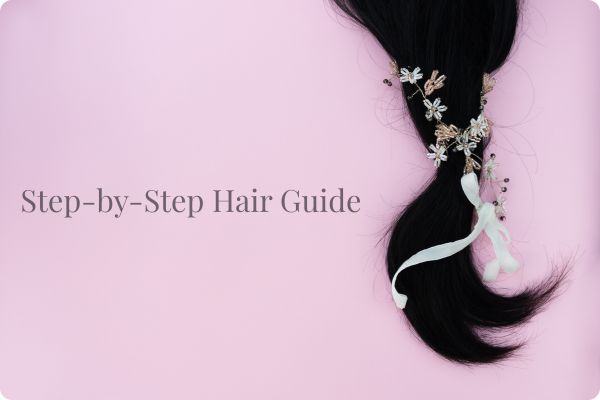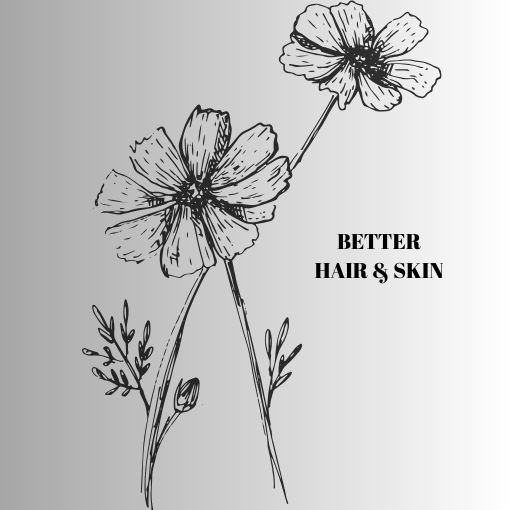How to Achieve Healthier Hair: A Step-by-Step Guide
Healthy hair doesn’t have to be a distant dream—it can be part of your everyday reality. Whether you’re struggling with dry ends, frizzy strands, or just want to give your hair a little extra care, following the right steps can transform your hair from dull to vibrant.

In this guide, we’ll walk you through simple steps that will help you achieve healthier hair in no time.
Step 1: Choose the Right Shampoo for Your Hair Type
The foundation of healthy hair starts with your shampoo. It’s essential to pick one that suits your hair type and needs. For example:
- Dry or damaged hair? Opt for a moisturizing or hydrating shampoo that nourishes without stripping away essential oils.
- Oily scalp? Go for a clarifying shampoo that removes excess oil and buildup but doesn’t dry out your strands.
- Curly hair? Use a sulfate-free shampoo to maintain moisture and minimize frizz.
Pro Tip: When washing, always lather your shampoo in your hands before applying it to your scalp. This ensures even distribution without overloading your hair.
Step 2: Condition, Condition, Condition!
Shampoo opens the hair cuticle, so conditioning is crucial to seal it and lock in moisture. The right conditioner will keep your hair soft, hydrated, and manageable.
- For dry hair: Look for rich, creamy conditioners that contain oils like argan or coconut. These will replenish moisture and give you that healthy shine.
- For fine or limp hair: Choose a lightweight, volumizing conditioner that won’t weigh your hair down.
- For curly hair: A leave-in conditioner or deep conditioner works wonders to hydrate curls and prevent frizz.
How to apply conditioner: Focus on the mid-lengths to the ends of your hair, where moisture loss is most noticeable. Avoid the scalp to prevent it from getting greasy.
Step 3: Dry Your Hair with Care
Wet hair is the most fragile, so how you dry it makes a big difference in maintaining its health.
- Towel-drying: After washing, gently blot your hair with a microfiber towel or cotton T-shirt. Avoid rubbing, as this can cause frizz and breakage.
- Heat drying: If you use a blow dryer, always use a heat protectant spray. This prevents heat from damaging your strands and helps to retain moisture.
- Air drying: If you can, let your hair air dry. This reduces heat damage and is great for hair that tends to get frizzy or dry.
Pro Tip: Avoid twisting or wringing your hair when it’s wet, as this can cause unnecessary stress and breakage.
Step 4: Apply Hair Treatments and Leave-In Products
Treating your hair with nourishing products like serums, oils, or leave-in conditioners can work wonders in locking in moisture, protecting it from environmental damage, and enhancing shine.
- Serums and oils: If you have dry or frizzy hair, a lightweight hair serum or oil can smooth the cuticle and make your hair more manageable.
- Leave-in conditioners: These are perfect for adding moisture and definition to curly or textured hair. They also protect against heat damage and UV rays.
- Hair masks: Treat your hair to a deep-conditioning mask once a week. This provides intensive nourishment and repair for strands that are dull or damaged.
Pro Tip: Apply your leave-in products to damp hair and distribute evenly using a wide-tooth comb or your fingers.
Step 5: Protect Your Hair When Styling
If you like to style your hair with heat tools, protecting your hair from the damage caused by hot tools is a must.
- Heat protectant spray: Always apply a heat protectant to your hair before using a blow dryer, straightener, or curling iron. These sprays create a barrier that minimizes damage and preserves moisture.
- Limit heat styling: Try to air-dry or style your hair in ways that don’t require heat. When you do use heat, keep the temperature as low as possible and never use it on dry hair.
Pro Tip: Give your hair a break from heat styling every few days to allow it to recover and stay healthy.
Step 6: Maintain a Healthy Diet and Lifestyle
Your hair’s health starts from within. A balanced diet rich in vitamins and minerals can make a significant difference in the strength and appearance of your hair.
- Biotin and zinc: These nutrients support hair growth and strength. Consider foods like eggs, nuts, and leafy greens.
- Omega-3 fatty acids: Found in fish like salmon, these fatty acids keep your scalp hydrated and healthy.
- Water: Hydration is key to healthy hair. Aim to drink plenty of water throughout the day to keep your hair moisturized from the inside out.
Pro Tip: Reduce your stress levels—excessive stress can contribute to hair thinning or shedding.
Additional Tips for Healthier Hair
- Avoid Over-Washing: Shampooing too frequently can strip hair of its natural oils. Aim to wash your hair 2-3 times a week, depending on your hair type.
- Trim Regularly: Regular trims (every 6-8 weeks) prevent split ends and keep your hair looking healthy.
- Sleep on Silk: Switching to a silk pillowcase reduces friction and prevents hair breakage and frizz.
Conclusion
Achieving healthier hair is a gradual process, but with a consistent routine and the right products, you’ll start seeing improvements in no time. Remember to be gentle with your hair, nourish it from within, and use the right tools and techniques to avoid damage.
What’s your go-to hair care tip? Let us know in the comments below or share your hair transformation with us!



